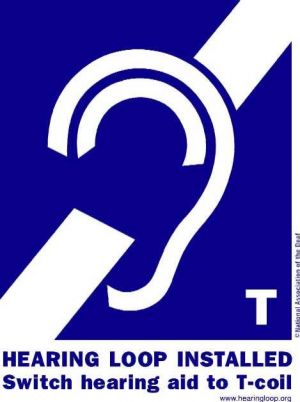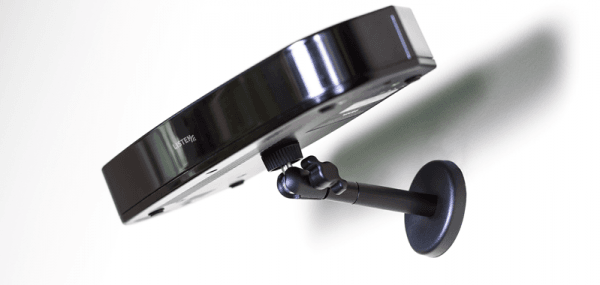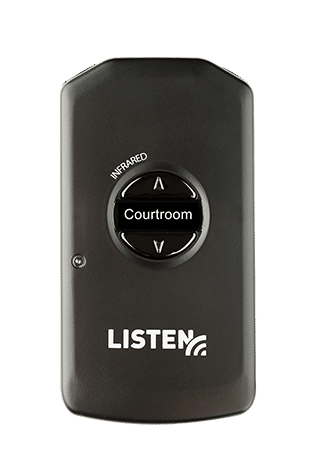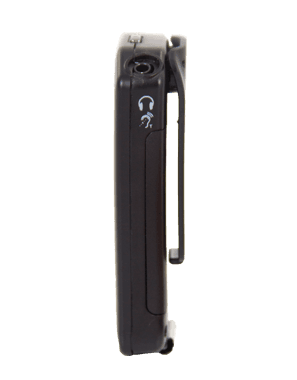Infrared Assistive Listening Devices
We have several Listen IR Receivers available to loan. ListenIR receivers are small, lightweight Infrared Assistive Listening Devices and can be used with ear speakers, earbuds, or neck loops to provide an assistive listening experience.
For an estimated 466 million people worldwide with hearing loss, traditional sound systems are sometimes not enough. Assisted Listening Devices (ALDs) can be used by everyone. It is highly recommended that awareness of the benefits and availability of ALDs be raised so that people can improve their listening experience. While ALDs aim to serve those with hearing loss, anyone can benefit from the clear, intelligible sound that they provide.
Assistive Listening Systems
There are two types of Assistive Listening Systems at Warwick University:
- Hearing loop, also known as induction loops or audio frequency induction loop systems (AFILS), consist of a copper wire placed within a room or theatre, that is connected via a special loop “driver” to a sound system. Sound is wirelessly transmitted via small changes in the magnetic field and is directed into the telecoil of hearing aids, cochlear implants, or telecoil receivers worn on the body, like a neckloop. In older spaces it is likely a room is equipped with an Induction Loop over an IR Transmitter. You should see signs within these spaces.

- Infrared systems (IR) which use invisible infrared light waves to transmit speech or music from a public address or sound system to an IR receiver. This technology is line-of-sight. Because IR signals are sent and received in a straight line, users are encouraged to sit as centrally as possible. You should be able to see an IR Transmitter within these spaces. In newer spaces it is likely a room is equipped with an IR Transmitter over an Induction Loop.

Assistive Listening Devices
What is an Assistive Listening Device?
When a person with a hearing disability is in a teaching environment, they can often be a great distance from any given sound source, and in such a challenging listening environment, they can have trouble hearing. Assistive listening devices (ALDs) expand the functionality of hearing aids and cochlear implants by amplifying sounds.
How an ALD works:
- An ALD sends an audio source through a transmitter across a distance to a receiver to intercept the signal. Then any one of several different listening attachments can be used to send the sound from the receiver to the user’s ear, telecoil-equipped hearing aid, or cochlear implant.
- If a user does not have a hearing aid or cochlear implant, he or she can use an assistive listening receiver with headphones or ear buds.
Each device has individual volume control, making it easy for the user to adjust the volume to the level at which they are comfortable.
Loan Equipment
Our Listen IR Receivers available to loan can be used in compatible Centrally Timetabled Spaces, our Facilities Search can be used to identify spaces with IR & Induction Loop capability. The Listen IR receivers can only be used in spaces with a Listen IR Transmitter installed into the room.
The Listen IR system transmits sound over infrared directly to the receiver without amplifying ambient noise for unsurpassed intelligibility and a superior listening experience. Our Listen IR transmitters installed in centrally timetabled spaces transmit a clear, reliable signal to enhance microphone usage across large areas. The signal range ensures that users in any sized space enjoy an uninterrupted audio performance.
These Listen IR receivers are available for all staff to loan. Students wishing to borrow these items must ask a member of staff to book the item on your behalf. When borrowing any item of our loan stock you will be expected to take full responsibility for this item and return it in the same condition it was loaned to you in.
Headphones are not provided with the Listen IR for sanitary reasons.
For more information, tutorials and resources on the Listen IR Receivers see:
ListenIR for University Applications


